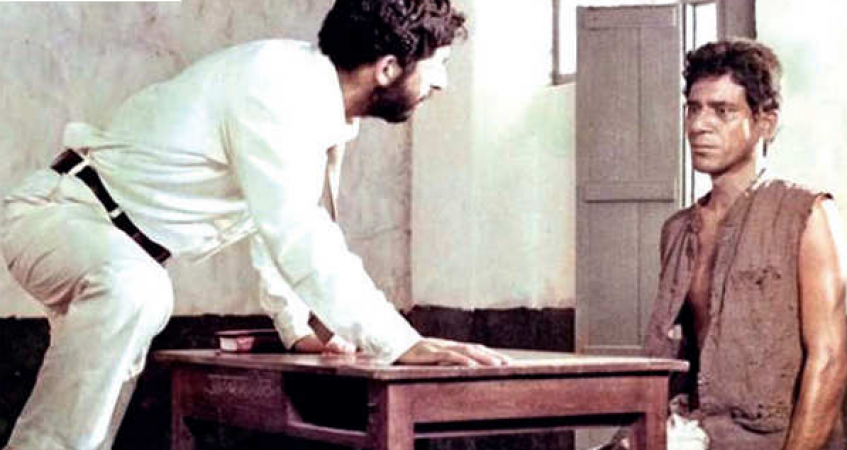
Dialogue is frequently regarded as the foundation of storytelling in the world of film. However, there are times when silence speaks louder than words and captures narratives and emotions in a special way. Such is the case with the critically acclaimed movie "Aakrosh" (1980), in which the character played by the illustrious Om Puri is silent for a sizable chunk of the running time. The mesmerizing art of Om Puri's silent performance is explored in depth in this article, along with how silence affects the story and audience participation.
Aakrosh, a film by Govind Nihalani, is a scathing social commentary that explores the problems of oppression and injustice that are pervasive in society. Lahanya Bhiku, a low-income laborer who is charged with killing his wife, is portrayed by Om Puri. Lahanya's initial silence, which conveys so much about his plight, the apathy of the system, and the haunting reality of his existence, is a crucial part of the movie.
Om Puri made a brilliant move in character development when he decided to keep quiet for almost 43 minutes of the movie. His silence is a reflection of Lahanya's powerlessness and oppression in a society that silences him. Additionally, it emphasizes the stark contrast between the powerful and the weak, emphasizing the gap in privilege that separates them.
Lahanya chooses not to speak, so his facial expressions and body language become his most effective means of communication. Om Puri's deft expressions capture a range of emotions, from rage and frustration to pain and vulnerability. He engages the audience in his world through his eyes and gestures, allowing them to empathize deeply with his plight.
Lahanya's character does not speak, which forces viewers to interact with the movie in an unusual way. The only way viewers can understand his feelings, reasons for doing things, and thoughts is through visual clues. This immersive experience fosters a deeper emotional connection with the character and a greater emotional impact, demonstrating the potency of cinematic storytelling beyond just words.
Lahanya's silence transcends the scope of his particular character arc and takes on the significance of a symbolizing the general silence that society frequently upholds in the face of oppression. It is a reflection of the silent masses whose voices are muted by the weight of social structures. 'Aakrosh' uses this metaphor to highlight more significant societal problems and to tell a story that has meaning beyond the confines of the screen.
Lahanya eventually breaks his silence in the movie, and that moment is crucial. It represents his transition from a victim without a voice to someone who demands justice. His pent-up emotions finally come out, which not only represents a turning point for his character but also provides the audience with a cathartic release.
Om Puri's portrayal of Lahanya in the 1980 film "Aakrosh" is proof of the profound influence of silence in movies. His silent performance conveys a great deal about the human condition, social injustice, and the potency of feelings. Om Puri captures the essence of the character without using words, enticing the audience to explore a world of empathy, introspection, and social criticism. The movie "Aakrosh" and Om Puri's iconic performance serve as a reminder that, in the world of film, silence can occasionally be the most powerful form of expression.
Celebrities Who Survived Thanks to Organ Transplants
Celebrating the Journey of Sindhura Gadde: From Vijayawada to International Success
Royal Roots and Silver Screens: 10 Bollywood Stars with Majestic Lineage